Anonymous
Ridin’ Dirty: A Basic Reference for Freight Hopping
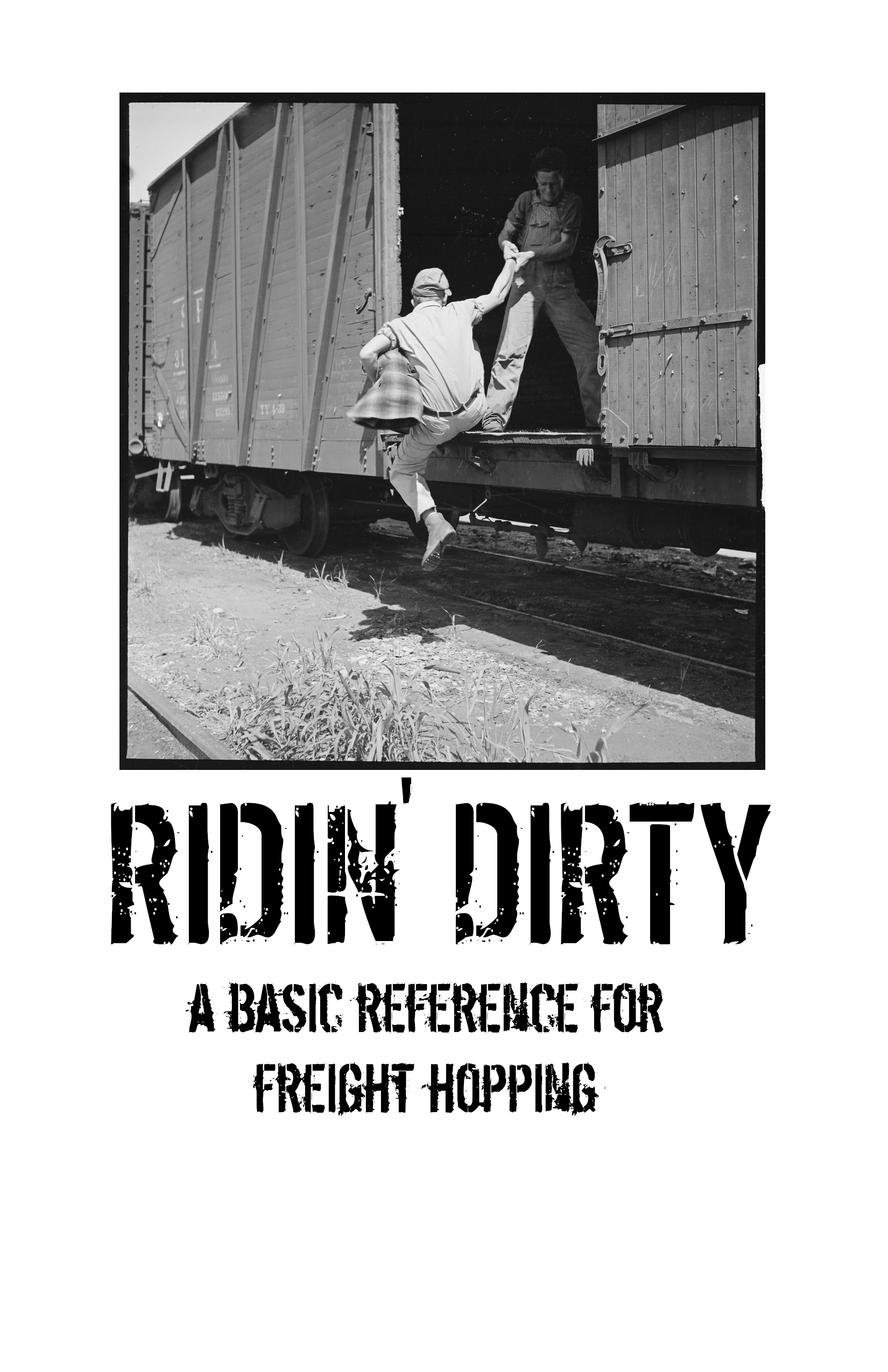
Safety Warnings From the Crew Change Guide
Reference For Riding Freight Trains
ID your train and not your train
A Few Words From the Distro
Riding freight is a core skill for anti-work, anti-school, individualist anarchists, lifestylists, nomads, oogles, crust punk dirty kids, and travelers.
Hate your job? Quit and go train hopping!
Sick of school? Drop out and go train hopping!
Feeling suicidal with no fun and excitement in your life?
Try something new, open a new chapter and go train hopping!
But train hopping is very dangerous! You SERIOUSLY could die.
But you could also die in a car wreck on the way to work, or die from getting shot to death by a mass shooter.
At the end of the day the decision to take a risk and train hop is yours..
Some people prefer to try it with experienced riders. Others value trying it alone.
This guide can help answer some questions, will make some suggestions, and might help you with your decision making process.
Foreword
This document is meant to be a basic reference for riding freight trains and not a step-by-step guide. Find an experienced train rider that you trust and learn from them. Remember, riding freight trains is both illegal and dangerous. Take it seriously, but also have fun!
Safety Warnings From the Crew Change Guide
Don't ride on loaded cars such as gondolas or lumber cars. It may seem like the cargo is so heavy it can't move, but the reality is that loads can and will shift. Even huge pieces of metal or massive loads of lumber. When they do you will be crushed to death or seriously injured.
Always expect slack action. Moving and stopped trains, as well as strings of cars in a yard, can have sudden jarring movement, forward or backward, at any time. Especially be aware of this when crossing over/thru cars, getting on or off, or when on a moving train (especially if you could be vulnerable to falling off from a severe jolt). When on a grainer porch, open boxcar door, standing up on a 53 or riding a "suicide car" (floorless cars best avoided altogether!), always be ready for that sudden jolt. If you are not, you can easily be thrown off the train and killed or injured.
When crossing cars, never step on the knuckle (coupler)--people get their feet crushed this way. Use the ladders and small walkways, always keeping a firm grip on the grab irons in case the train suddenly moves (three points of contact at all times!). Avoid crossing over cars without ladders and walkways (such as auto racks and some coal cars) if possible.
Riding an empty boxcar, assume the door can shift at any time. Use a spike or tie plate or even a pallet to make this less likely...but assume it is still possible. Many a rider has been flung out a door or crushed or has injured a leg by sitting in the door and dangling their legs out the door and being hit by a trackside obstacle. If you come across an open plug-door boxcar, assume workers will shut it if they see it. If you ride one, make sure the door is tied down. All these make more sense if you start riding with someone who knows what's up.
Always check before crossing a track. RR cars when being switched can move almost silently. Sometimes the sound of one train or an idling locomotive masks the sound of a rapidly approaching train on another track--especially if you are on the outside of a curve. In many areas, there are high speed commuter or Amtrak trains which can surprise you. (Note: Commuter trains might also have a third rail which will electrocute you to death if you touch it).
Avoid getting on or off moving trains. But if you do, there are safer, and less safe, and really stupid ways to do it. Learn this before you are faced with a decision about getting on or off a moving train. At the vast majority of locations you can get on and off stopped trains, always the safest move...There are many variables involved in catching a train on the fly--how much experience and gear you have, the weather, traveling companions, type of freight car, available light, having a dog or bike along, steepness of the ballast, your height, etc. Train speeds at any one location can vary greatly -- speed limits have changed and trains don't always follow them anyways. Don't believe this guide (or other riders) when you hear that you might be able to catch on the fly in a certain place. Never feel pressured to catch on the fly just because the people you are with are doing it or others have done it there in the past. If you aren't sure you can make it, don't try it. If you fuck up, even once, you don't get a second chance, your limbs aren't gonna grow back.
Being wasted, or even somewhat drunk or high, while on or around trains reduces your self-awareness which increases your risk and the likelihood you will disregard the above rules and other safety practices around trains.
Reference For Riding Freight Trains
Intermodal (IM)
Intermodal trains carry large containers or canisters or "cans" that are 20, 40, 45, 48, or 53 ft in length as cargo. International cans are 20 ft or 40 ft, while domestic cans are 45, 48, and 53 ft. Cans can be either in well cars or flat cars. Only well cars are rideable. IMs are typically faster, higher priority, better rides, but go mostly to major destinations.
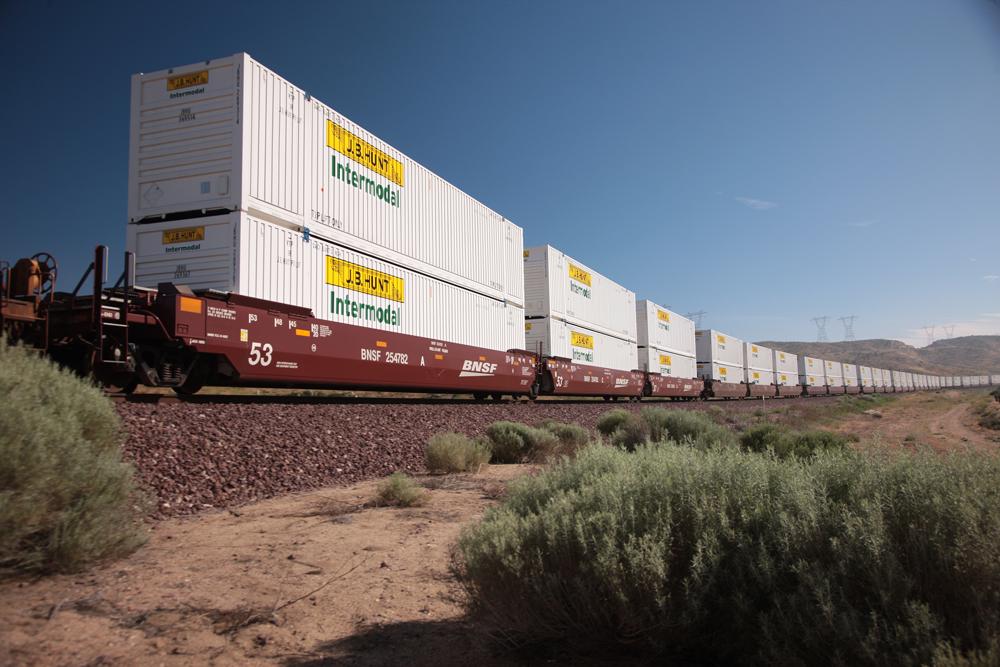
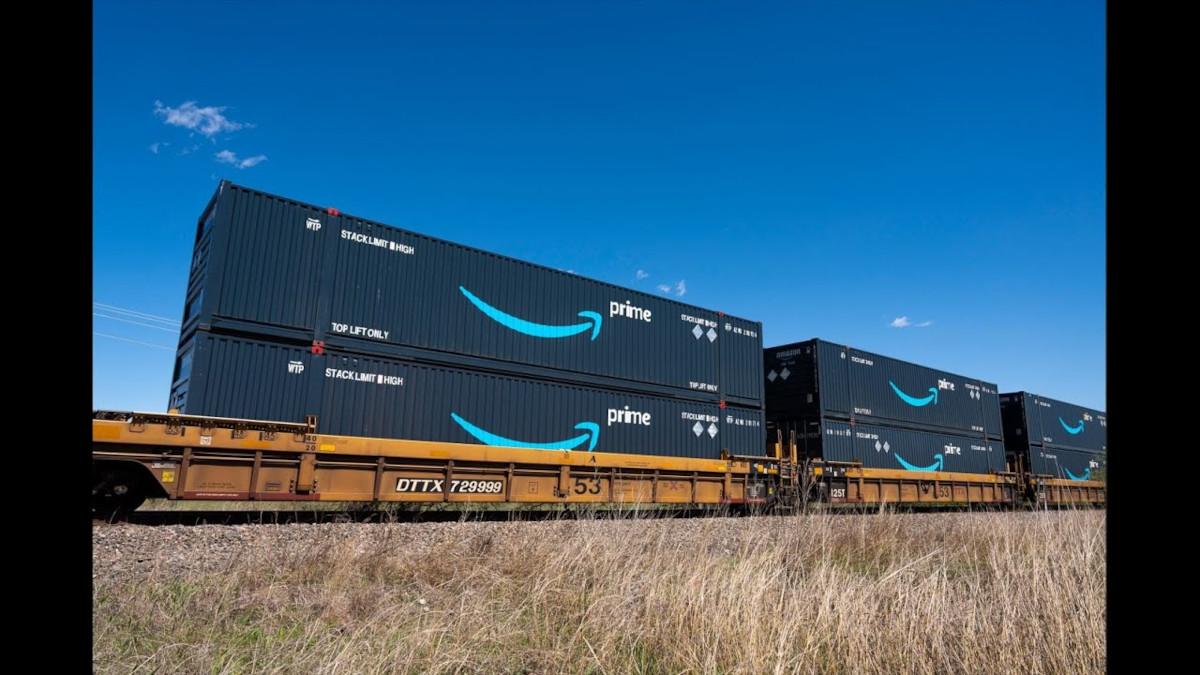
One tip for finding a rideable IM car is to look for "ribbed" cars with ridges on their side as opposed to smooth cars with no ridges. This only applies to cars that are 53 ft long.
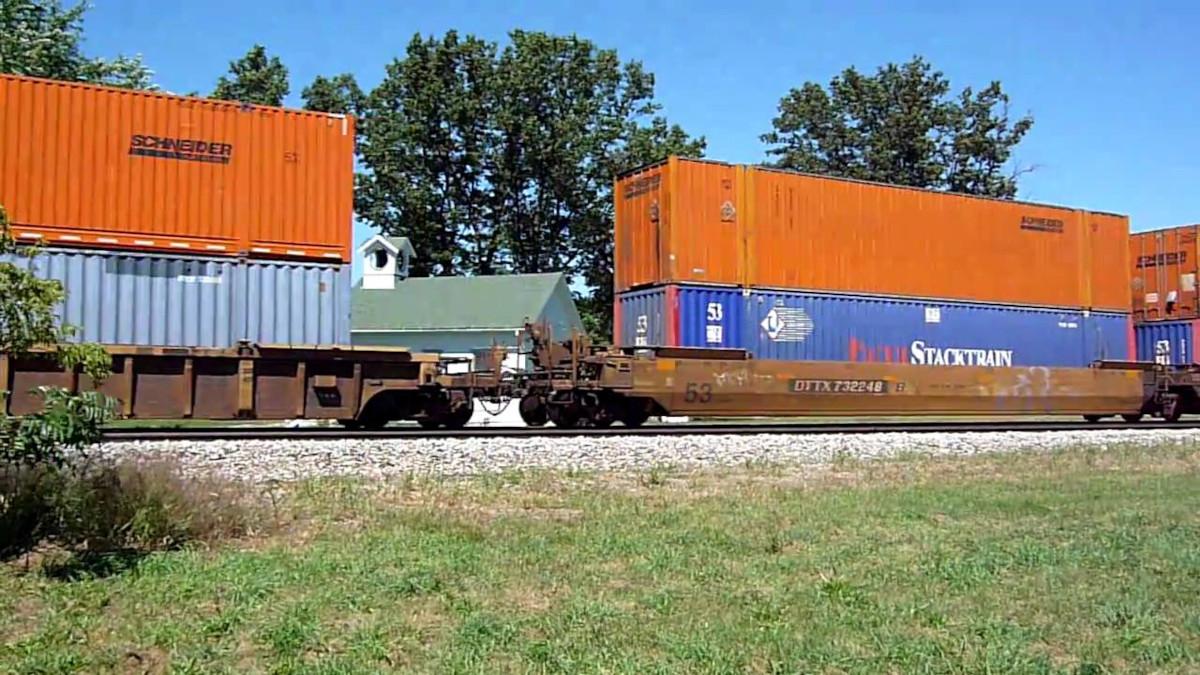
For cars that are 40 ft long (international cans), look for ribbed sides where a black stripe with 125T (no dash between 125 and T) written on it is inset one panel from the end.
Intermodal trains can also have wheeled trailers or "pigs" on railcars, sometimes with "wings" you can hide behind.
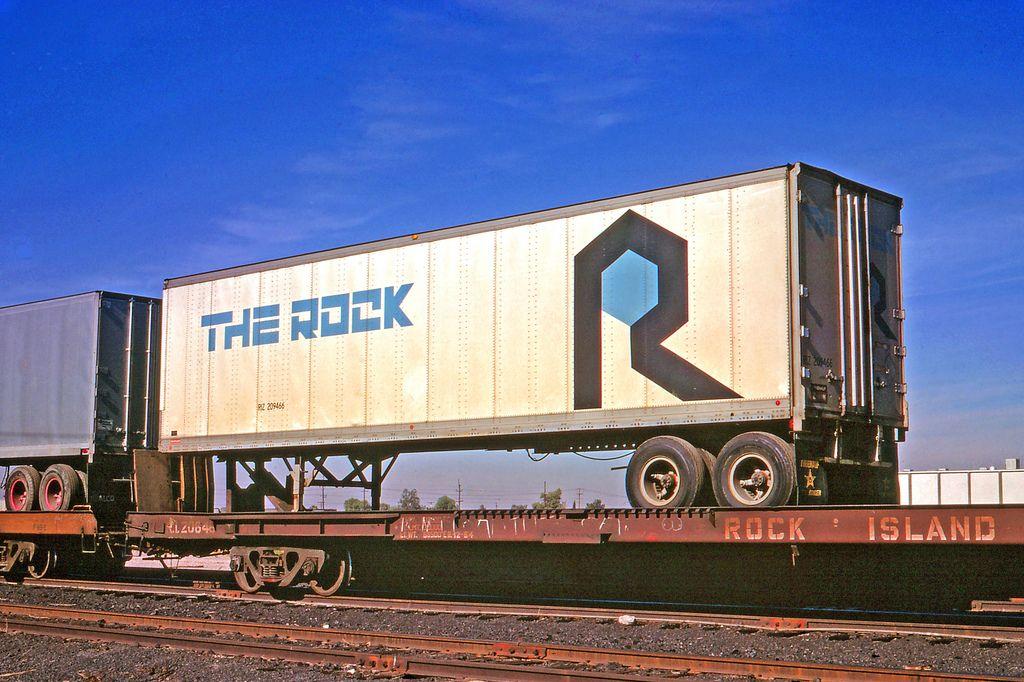
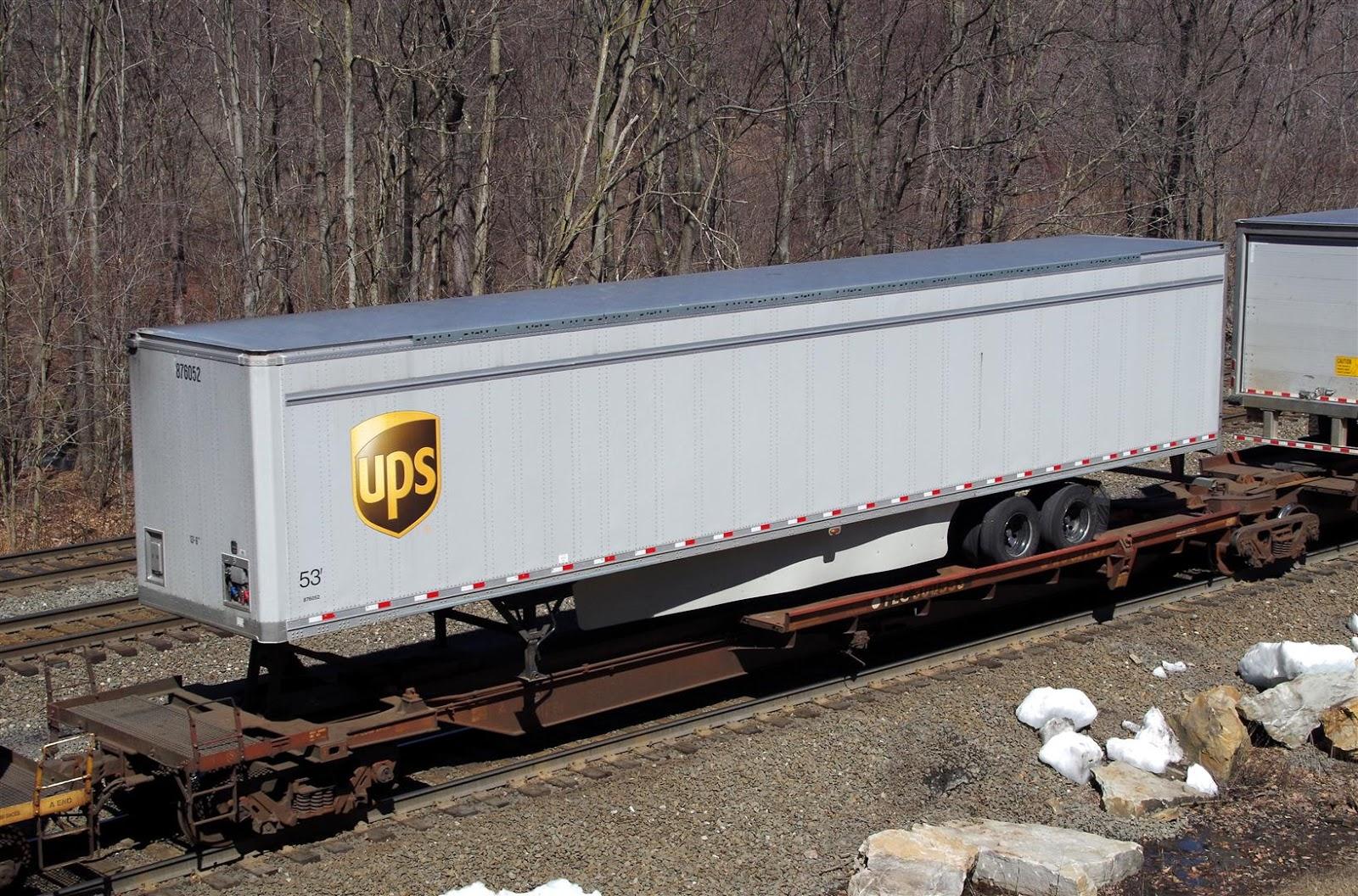
General Manifest (GM)
General Manifest, also called "junk" trains, have multiple types of cars, including tankers, boxcars, gondolas, grainers, hoppers, and auto racks. Grainers and hoppers are the easiest rides because they have porches. It is also possible to ride empty gondolas and boxcars, but they are much less safe, so we do not recommend it. Techniques for riding GMs will be provided in another zine. GMs have slower rides, lower priority, but often go to less frequently traveled destinations.
https://www.floridarail.com/news/the-8-most-common-types-of-railcars-for-freight-shipping/
Find a route
Pick an origin and destination (example: origin: buffalo; destination: chicago)
A: Using the crew change guide
1. Look at the crew change guide for the origin
The crew change guide should tell you whether there are any trains that go directly from your origin to destination. You might need to choose other origins and destinations that are nearby if there are no direct routes.
If there is no direct route, you will have to find a sequence of origins and destinations that get you where you want to go by repeatedly referencing the guide.
2. Find a yard at the origin with trains that go from origin to destination
There are often multiple yards. Each have their plusses and minuses, such as greater security but more frequent trains.
Note that the train might not go directly from origin to destination, but might stop at the destination along the way. This is often because there is a crew change or the train is getting "worked" on, which means it is picking up or dropping off cargo, or refueling. The crew change guide should specify the crew change spots and might specify whether work/refueling is done.
B: Using railroadfan
1. Go to https://railroadfan.com/wiki/
2. Choose a carrier (example, Norfolk Southern)
3. See whether the carrier runs trains from your origin to destination
https://railroadfan.com/wiki/index.php/NS_Train_Symbols
Example: The Norfolk Southern 200 train runs daily from Harrisburg, PA (origin) to Bethlehem PA (destination)
200 GI8 - Harrisburg, PA Bethlehem, PA Daily
Find Possible Trains
The crew change guide and railroadfan website will have lists of possible trains that go from your origin to destination, or stop along the way.
Make a list of all trains that go along the route you want.
Find train time
It is generally not possible to know the exact departure and arrival times of freight trains.
However you can get a rough guess using the following methods:
1. Using the train symbol (example, "Norfolk Southern 28X freight train"), search Youtube for videos of the train.
Railfans will often make videos with location and time stamps.
2. Based on the time stamp you can then approximate the time the train will be at your location of interest by assuming that the train takes two times the driving time according to whatever mapping website you prefer, if it's an IM, or three times the driving time if it's a GM.
For example, if the Youtube video shows your IM train in Buffalo at 2am and Google Maps says it takes 7.5 hours to drive from Buffalo to Chicago, then you would estimate that the train will arrive in Chicago 15 hours later, at 5pm.
3. Use railfan cams and logs
Railfans often use cameras to record freight trains at a specific location. This gives you time and location information for the train. Using the two-times-the-driving-time method (or three times), you can then estimate when the train will arrive at your location of interest (or when it departed).
Example railfan camera websites with logs
Altoona Curve: https://pt242.com/
Deshler Ohio: https://www.youtube.com/watch?v=Y28qU7UsFko
Most railfan cams can be found at virtualrailfan.com
4. Call the yard office and ask whether your train will be arriving or departing and at what time
Internet search the yard office phone number. Call them and tell them that you are a railfan and want to film the train. You are wondering what time it will depart the yard.
Warning: Calling can tip off the yard, increasing security. Do this as a last resort only.
ID your train and not your train
A: ID using Youtube videos
Using Youtube videos and the crew change guide, you can try to learn what your trains look like and differentiate them from other trains that are on the same route. You want to come up with characteristics of your trains that are different from the characteristics of the other decoy trains. Some characteristics include:
1. Engine type (e.g., BNSF, NS)
2. Manifest (Intermodal or General Manifest)
3. Types of cars (e.g., JB Hunt and pigs vs. 40ft international containers)
4. Number of cars (e.g., short train with only 20 cars vs. long train with 100 cars)
B: Check flysheet/airsheet
Intermodal trains typically have flysheets on each container. The sheets are on one end of the container in a small metal box. Open the box, pull out the paper, look at the destination, and put the paper back. The destination should help you determine which route the train is on by looking at the railroad maps. For example, if you're trying to get from Chicago to Pittsburgh, an eastbound train with cargo going to New Jersey according to the flysheet will go on a route through Pittsburgh, while if the flysheet said New York, the route would go north and not through Pittsburgh.
An airsheet is similar, except it is attached to the front of a string of cars before they have an engine.
C: Where is the train on the tracks
You can look at Google Maps and follow the train tracks. Often there are two or more train tracks whenever a train is stopped. The outer tracks may go to a different place than the inner tracks. By tracing the path on Google Maps, you might be able to tell whether the train is going in the right direction.
D: Listen to scanners
Sometimes briefly before departure, the train conductor will communicate with the yard workers or office about their intent to depart. During this communication they might mention the train symbol (e.g., "28X about to depart").
Find a ride
1. Once the train stops, walk up to the train without being seen.
2. Staying hidden, walk along the train to spot rideable cars, such as 53 ft intermodal cars with ridges.
3. When you see a promising car, using two free hands and both feet, climb up the side of the train car and look inside at the "wells" for intermodal containers or the "porch" for grainers. Keep three points of contact with the train at all times (e.g., two hands and a foot). The train can jerk at any time (slack action) and severely injure you if you are not securely attached to the train.
4. If there is no floor in the well, then the ride is a suicide. Try a different car.
5. If the floor has a well, judge whether it is large enough to fit you and your pack comfortably, and whether it will conceal you from someone walking or driving by. A decent well on an intermodal container will be 3-4 feet wide and 3-4 feet deep (a "mini-well"). Anything smaller is not rideable. Occasionally a 40ft can will be in a 53 ft rail car with a floor, giving a "deep well" with lots of room. Porches on grainers give you less space and concealment.
6. Get down in the well or on the porch, laying flat, and hiding your pack. Stay down until you're out of the yard, or even better out of the city and into the rural areas.
7. The train will usually make an air release sound before departing. This is the sound of the air breaks disengaging. Slack action will often follow shortly thereafter.
Get off the Ride
Use GPS to track your location.
Stay hidden while going through railyards.
The best option is to get off the train before it enters the destination yard. Usually trains stop before entering the yard. This is your chance. Get off the train safely, watch for other trains when crossing the tracks, and get to a road before you are seen.
If the train enters a railyard and a loud air noise sounds, the engine is detached and the train has been dead-ended in the yard. Get out of the yard and try to find another train.
Worked Example: Buffalo to Chicago (Easy)
We want to go from Buffalo to Chicago.
Because Chicago is the railhub of the US, there's lots of rides there, so we will take an IM.
There are multiple railyards in Buffalo that go to Chicago. We pick the CSX Frontier yard because of the high frequency of westbound IMs, and the low security at the hopout spot based on the crew change guide.
Looking at the railroadfan website we have priority IMs (000 series) and regular IMs (100 series).
https://railroadfan.com/wiki/index.php/CSX_Train_Symbols#000_I-series_-_Intermodal
Looking at the CSX railmap, westbound trains will most likely come from NY, NJ, or MA through Buffalo to Chicago.
https://www.csx.com/index.cfm/library/files/customers/maps/printable-system-map/
Based on this, the 000 series trains could be
---- --------------------------- -------------------------- -----
I001 North Bergen,NJ Bedford Park, IL Tuesday
I003 South Kearny, NJ Bedford Park, IL Daily
I007 DeWitt Yard - Syracuse, NY Rose Lake, IL Mon-Sat
I009 Port Newark, NJ Bedford Park, IL Daily
I017 Worcester, MA Bedford Park, IL Daily
---- --------------------------- -------------------------- -----
And 100 series trains could be
---- --------------------------- -------------------------- -----
I157 Greenwich Yd., Phil, PA Bedford Park, IL Daily
I165 Seneca Yd. - Buf, NY (CPKC) Schiller Park, IL (CPKC) Daily
I169 Port Newark, NJ 59th St Yard - Chicago, IL Daily
---- --------------------------- -------------------------- -----
From this we can see that every possible westbound IM coming through Buffalo would go to the Chicago area, except the I007 which goes to Rose Lake. Thus our main task is to determine what the I007 looks like to avoid it.
We take a look at some videos of the CSX I007. Internet searching CSX I007 freight train gives
---
Video 1: https://www.youtube.com/watch?v=DIVsycDCBUU
Engine type: CSX (x2)
Manifest: IM
Types of cars: Lots of Maersk containers and other 40 foot containers (can tell by the deep wells on each side of the containers in each car, as well as the markings on the side of the car), 7 factor containers, a few pigs (some UPS)
Number of cars: Many, didn't count but you could
Time: Syracuse NY (close to origin) in January, can't tell the time
---
Video 2: https://www.youtube.com/watch?v=unFB29srS0k
Engine type: CSX (x2)
Manifest: IM
Types of cars: Mix of empty cars, 53 foot containers, and 40 foot containers
Number of cars: Very short
Time: Collinsville IL (close to destination), daytime; 11 hours driving to Buffalo, which would be passed through buffalo 22 hours before, some time during the day
---
Video 3: https://www.youtube.com/watch?v=bxWd4T9LKvo
Engine type: CSX (x2)
Manifest: IM
Types of cars: Some 40 foot cans, including Maersk, yellows, reds, blues, some pigs
Number of cars: fairly short
Time: Caseyville IL (close to destination), evening; 11 hours driving to Buffalo, would be passing through Buffalo in the evening
---
We could look at more videos. From this, it seems like we should expect the I007 some time during the day or evening, for it to have a lot of cars (because the short train is likely the result of it dropping cars after Buffalo), and for there to be a fair amount of 40 ft containers, including Maersk, possibly pigs.
The railcam log in Deshler Ohio does not include I007 unfortunately.
From this research, it would be best to avoid any trains with international (40 ft or 2x20 ft) containers.
To confirm the train we can check the flysheets when it stops. However, international containers do not have flysheets, so we would need to find domestic containers (45 ft, 48 ft, or 53 ft). Destinations in southern Illinois would indicate that the train is the I007 and to be avoided, while Chicago or northern Illinois would indicate that the train is good to ride.
I would be very excited by a westbound IM with Amazon Prime, UPS, and pigs with wings, which indicates that it is high priority (000 series) and thus likely to get to Chicago the fastest.
Once we've found our train (avoiding the I007), we pick a ride. I like to go for mini-well containers that have plenty of room, or pigs with wings.
End
Hopefully these tips help you get where you want to go safely, but there's no substitute for finding some punks or hobos who ride trains and learning from them. Making friends is the best part of riding trains.
Sometimes though, you've got no destination. When you're on that kinda journey, there's no wrong trains!
Good luck, get hopping, and enjoy the ride!!
Reference Information
railroadfan.com
https://railroadfan.com/wiki/index.php/Main_Page
virtualrailfan.com
2017 Class I Railroads in USA
https://goo.gl/maps/DkAy4bzCANJvBRYZA
2017 Union Pacific System Map
https://goo.gl/maps/PJhgHnPk9betLB387
2017 BNSF System Map
https://goo.gl/maps/DagFKpRPyVEBDvKr7
2017 Norfolk Southern Map
https://goo.gl/maps/FafgYLBQ8kopKtaTA
2017 Kansas City Southern Map
https://goo.gl/maps/xrYsS9oeYYDZX9Py7
2017 Canadian National Map
https://goo.gl/maps/r1uVCHmTGDSxszur6
2017 Canadian Pacific Map
https://goo.gl/maps/DYm2YPYh2RbKTdbN6
2017 CSX System Map
